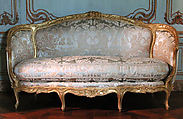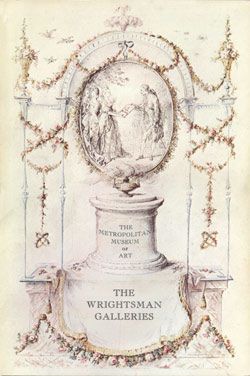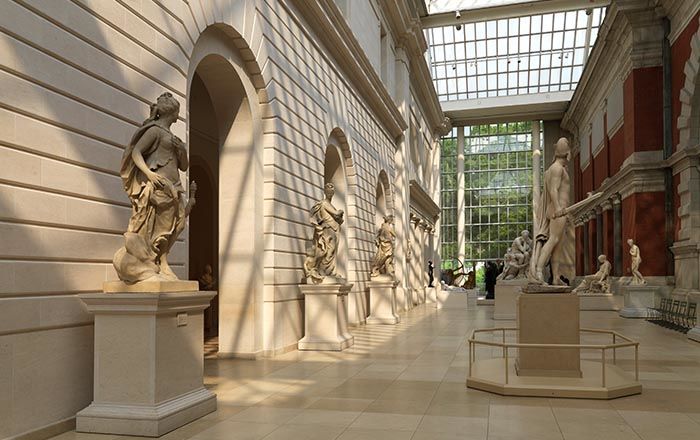Sofa (canapé à confidents)
This elaborately carved beechwood sofa (canapé) is stamped several times: I. POTHIER. Jean-Jacques Pothier was elected a maître menusier in 1750. Around 1775-76, he established his workshop in the Rue de Bourbon-Villeneuve, Paris, and appears to have retired around 1780.
The curvilinear shape of the frame with its crest-rail curving around the ends to form armrests, the serpentine seat-rail and the seven short cabriole legs are still expressions of the Rococo style. However, the continuous molding along the legs, seat-rail, arm supports and crest-rail, as well as the symmetrical floral and foliage carving makes this sofa a Transitional piece.
Pothier made other seat furniture in the Transitional style by introducing classical motifs such as the Greek key pattern, thereby heralding the advance into Neo-classicism (see armchair 07.225.60).
Very little is known about Pothier’s clientele. His oeuvre shows a high level of craftsmanship and great attention to detail. He seems to have worked regularly with the foremost menuisier Georges Jacob since a number of virtually identical pieces come from both workshops.
This image cannot be enlarged, viewed at full screen, or downloaded.
This artwork is meant to be viewed from right to left. Scroll left to view more.




